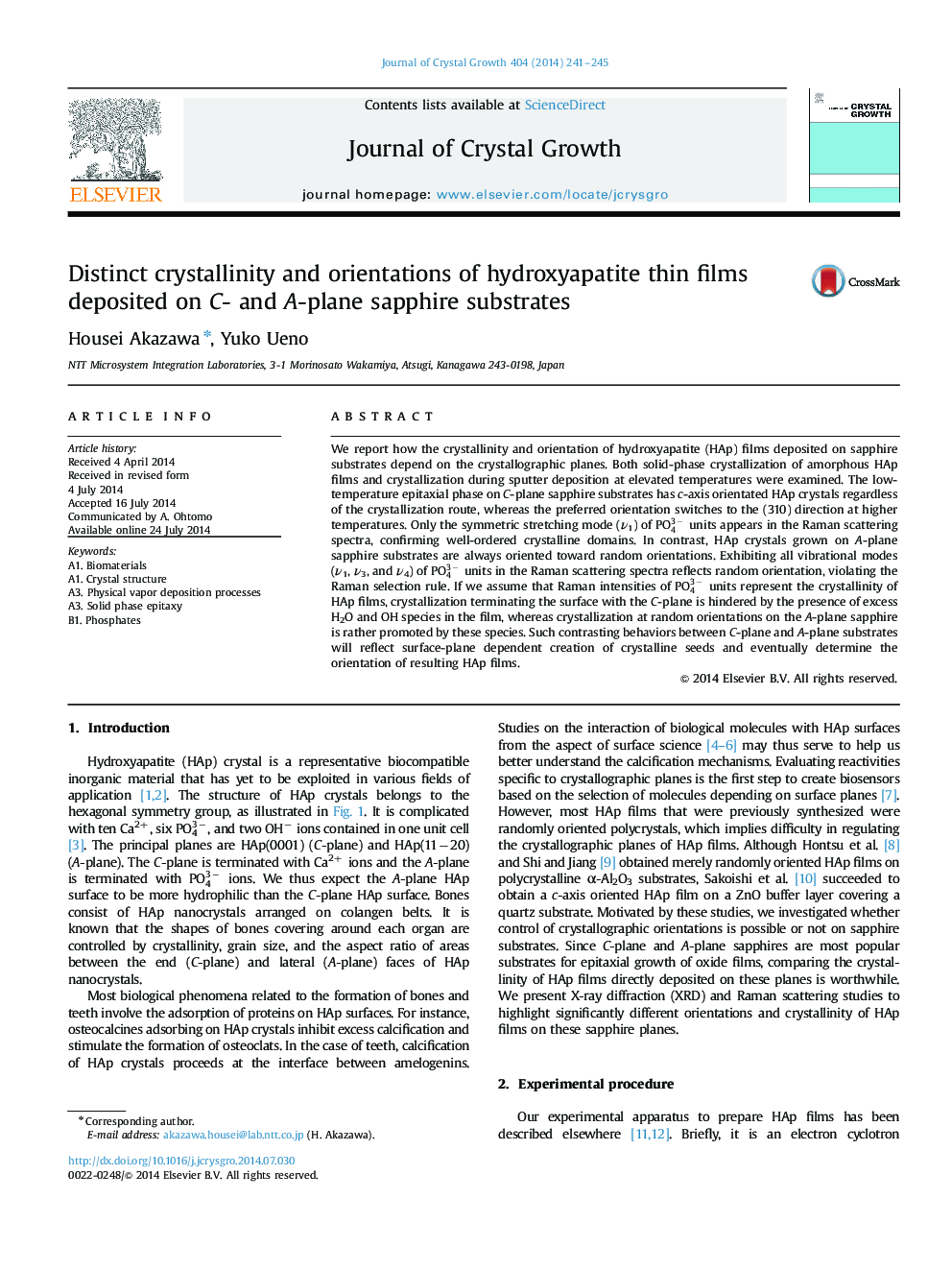| Article ID | Journal | Published Year | Pages | File Type |
|---|---|---|---|---|
| 8150954 | Journal of Crystal Growth | 2014 | 5 Pages |
Abstract
We report how the crystallinity and orientation of hydroxyapatite (HAp) films deposited on sapphire substrates depend on the crystallographic planes. Both solid-phase crystallization of amorphous HAp films and crystallization during sputter deposition at elevated temperatures were examined. The low-temperature epitaxial phase on C-plane sapphire substrates has c-axis orientated HAp crystals regardless of the crystallization route, whereas the preferred orientation switches to the (310) direction at higher temperatures. Only the symmetric stretching mode (ν1) of PO43â units appears in the Raman scattering spectra, confirming well-ordered crystalline domains. In contrast, HAp crystals grown on A-plane sapphire substrates are always oriented toward random orientations. Exhibiting all vibrational modes (ν1, ν3, and ν4) of PO43â units in the Raman scattering spectra reflects random orientation, violating the Raman selection rule. If we assume that Raman intensities of PO43â units represent the crystallinity of HAp films, crystallization terminating the surface with the C-plane is hindered by the presence of excess H2O and OH species in the film, whereas crystallization at random orientations on the A-plane sapphire is rather promoted by these species. Such contrasting behaviors between C-plane and A-plane substrates will reflect surface-plane dependent creation of crystalline seeds and eventually determine the orientation of resulting HAp films.
Keywords
Related Topics
Physical Sciences and Engineering
Physics and Astronomy
Condensed Matter Physics
Authors
Housei Akazawa, Yuko Ueno,
